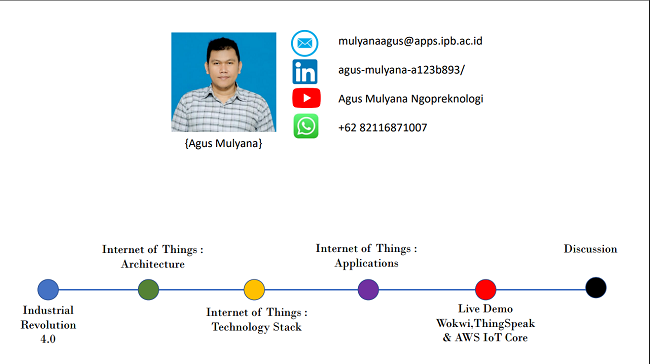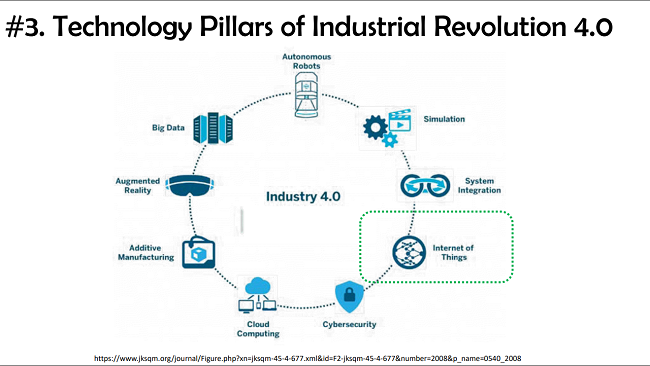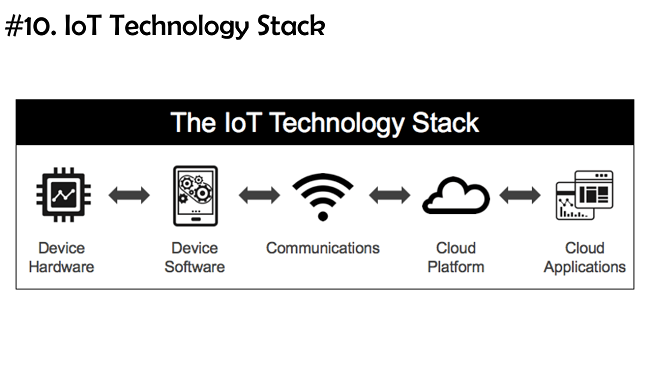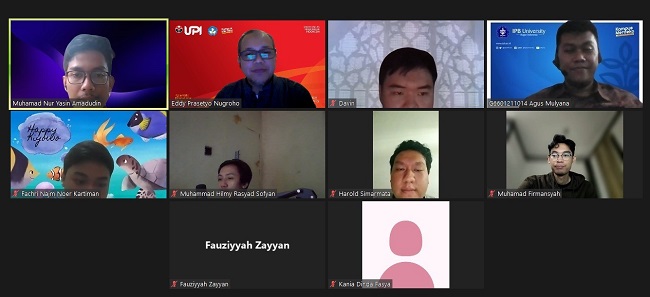Universitas Pendidikan Indonesia’s Computer Science Program through the Internet of Things (IoT) course taught by Eddy Prasetyo Nugroho, M.T. recently hosted a guest lecture on the topic of IoT on Friday, April 14th, 2023. The event was attended by students who are currently enrolled in the IoT course.
The guest lecturer for this event was Agus Mulyana, the Director of PT Makerindo Prima Solusi and an expert in IoT with over 15 years of experience. In his presentation, Agus Mulyana discussed the Fourth Industrial Revolution, IoT Architecture, Technology Stack, and Applications of IoT.

Figure 1. Profile of Agus Mulyana & Topics to be Discussed in the Guest Lecture
According to Agus Mulyana, IoT is a tool that connects different devices to form a system that can collect and analyze data to make decisions without human intervention. IoT is one of the emerging technologies in the era of the Fourth Industrial Revolution that promotes computerization in manufacturing.

Figure 2. Technology Pillars in the Industrial Revolution 4.0.
Agus Mulyana also explained the three types of IoT architecture. The first type is the 2 Tier architecture, which uses only Things or devices and Cloud or platform to store and analyze data. The second type is the 3 Tier architecture, which includes Things, Cloud, and Edge or a terminal that stores data temporarily before it is forwarded to Cloud. Edge aims to preprocess the data that has been collected. The third type is the 4 Tier architecture, which consists of Things, Cloud, Edge, and Fog. Fog has the same function as Edge but usually has larger storage and computation capacity, and is used to limit incoming data before it is forwarded to the cloud.

Figure 3. Three Types of Architecture in IoT
Agus Mulyana also discussed the Technology Stack used in IoT, ranging from hardware to software. Some of the technology stacks he discussed were hardware platforms, IoT operating systems, network topologies, IoT protocols, cloud platforms, and several IDEs commonly used to create IoT projects.

Figure 4. Technology Stack on IoT
Moreover, Agus Mulyana provided examples of IoT applications in society, particularly in Agriculture. This can be done through the use of sensors installed on crops, soil, and even livestock. The data collected from these sensors can then be analyzed to obtain more detailed information about crop conditions, such as water content and required nutrients, enabling farmers to make more accurate decisions in crop management.
Due to time constraints, Agus Mulyana was unable to demonstrate a live demo using several software tools that support the development of IoT projects. However, it is hoped that in the next opportunity, Agus Mulyana can perform the live demo, providing a clearer and more concrete understanding of the use of software tools that support the development of IoT projects.
After the presentation, the guest lecture continued with a discussion session that involved the students. The students took the opportunity to ask more about IoT and seek advice from the guest speaker about IoT projects they can develop.

Figure 5. Discussion session with students
One of the students asked an interesting question about the lack of IoT development in Indonesia. Agus Mulyana explained that the slow development of IoT in Indonesia is due to the high cost of implementing large-scale IoT systems. Therefore, there is a tendency to choose existing systems as it is more cost-efficient.
The guest lecture received positive responses from the attending students. They gained a deeper understanding of the concept and potential uses of IoT in various sectors. They realized that IoT has enormous potential to improve efficiency and productivity in various sectors. They also hoped that the use of IoT could continue to be developed and applied in Indonesia.
Writers: M.Cahya